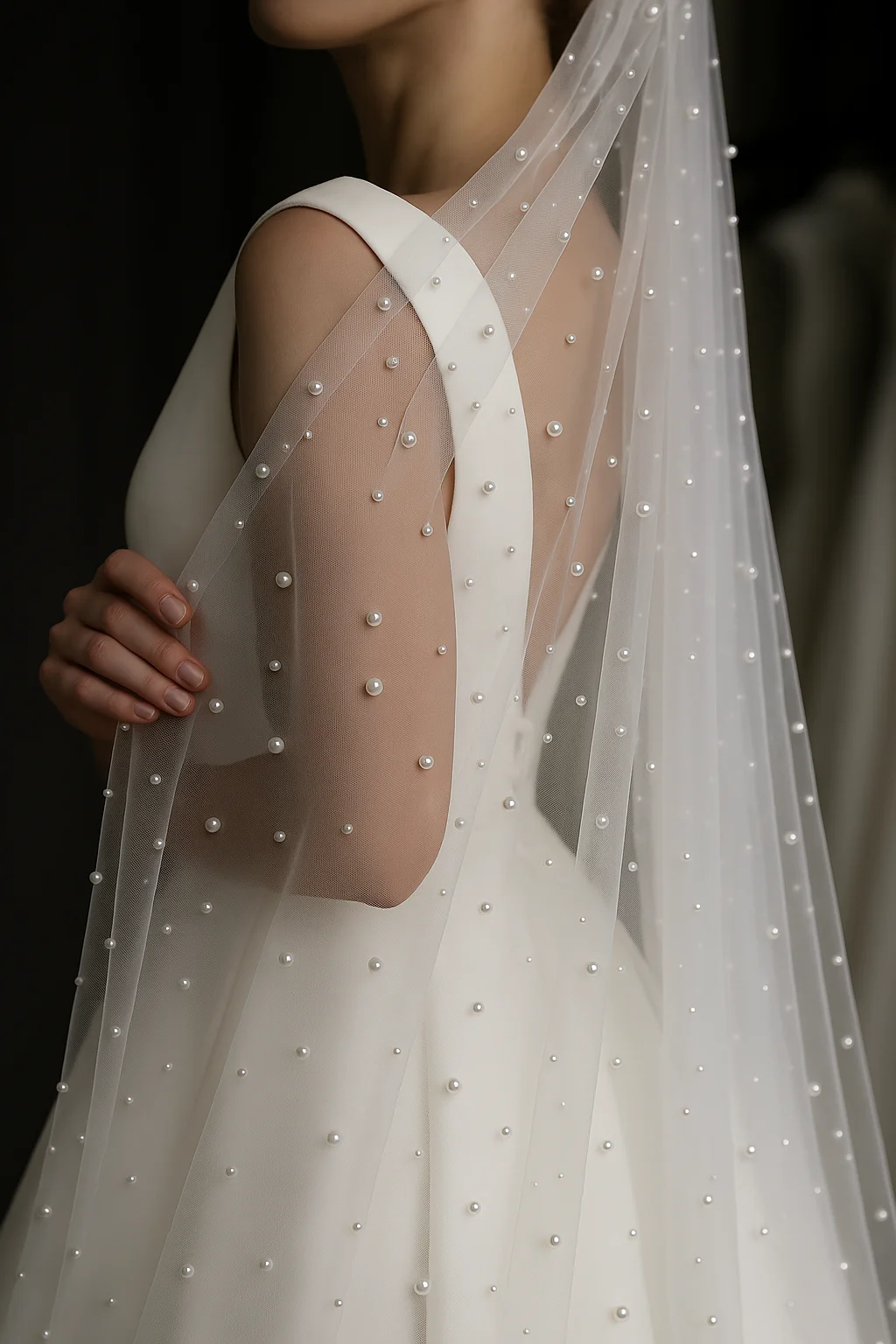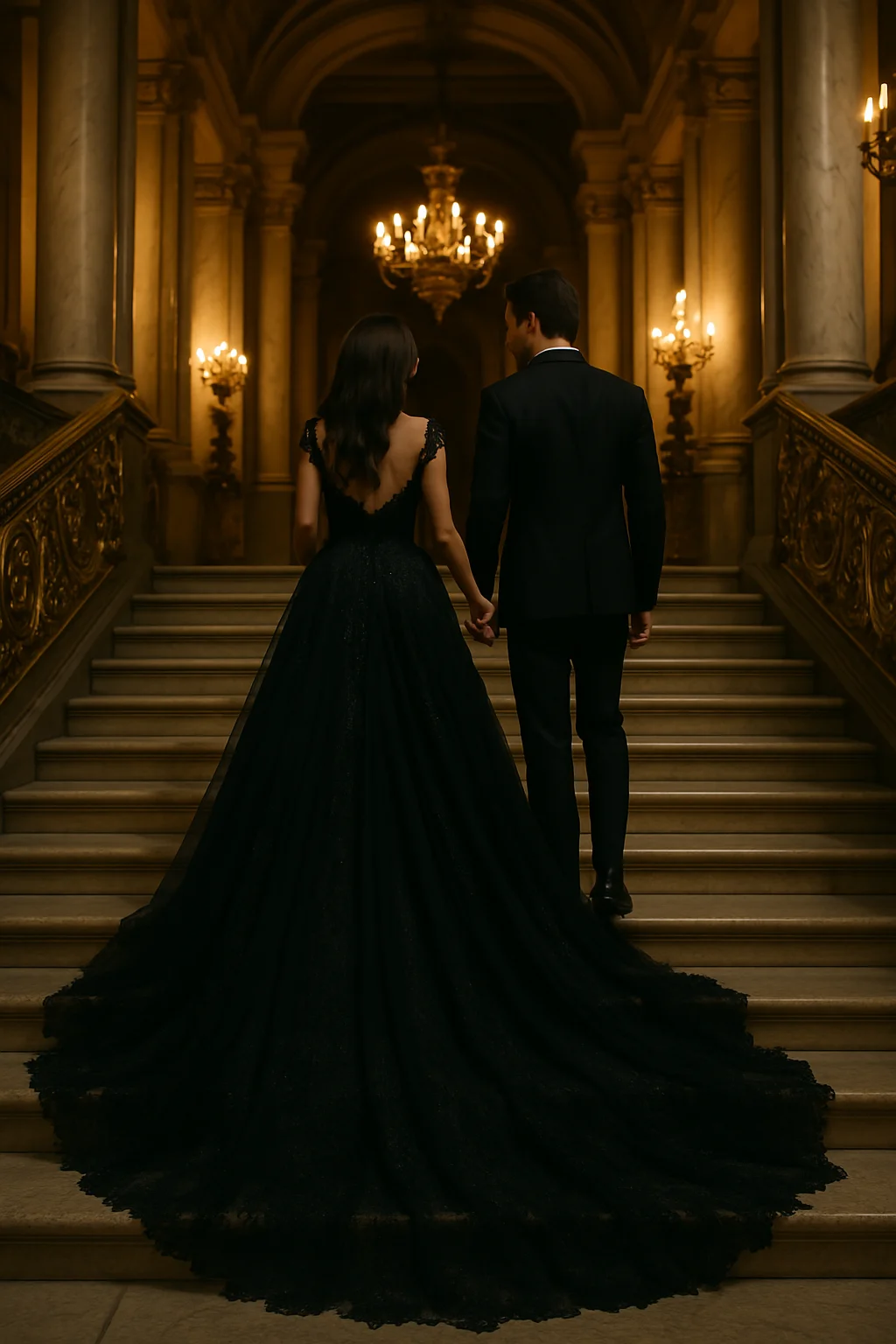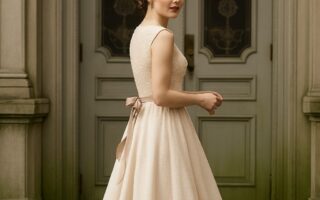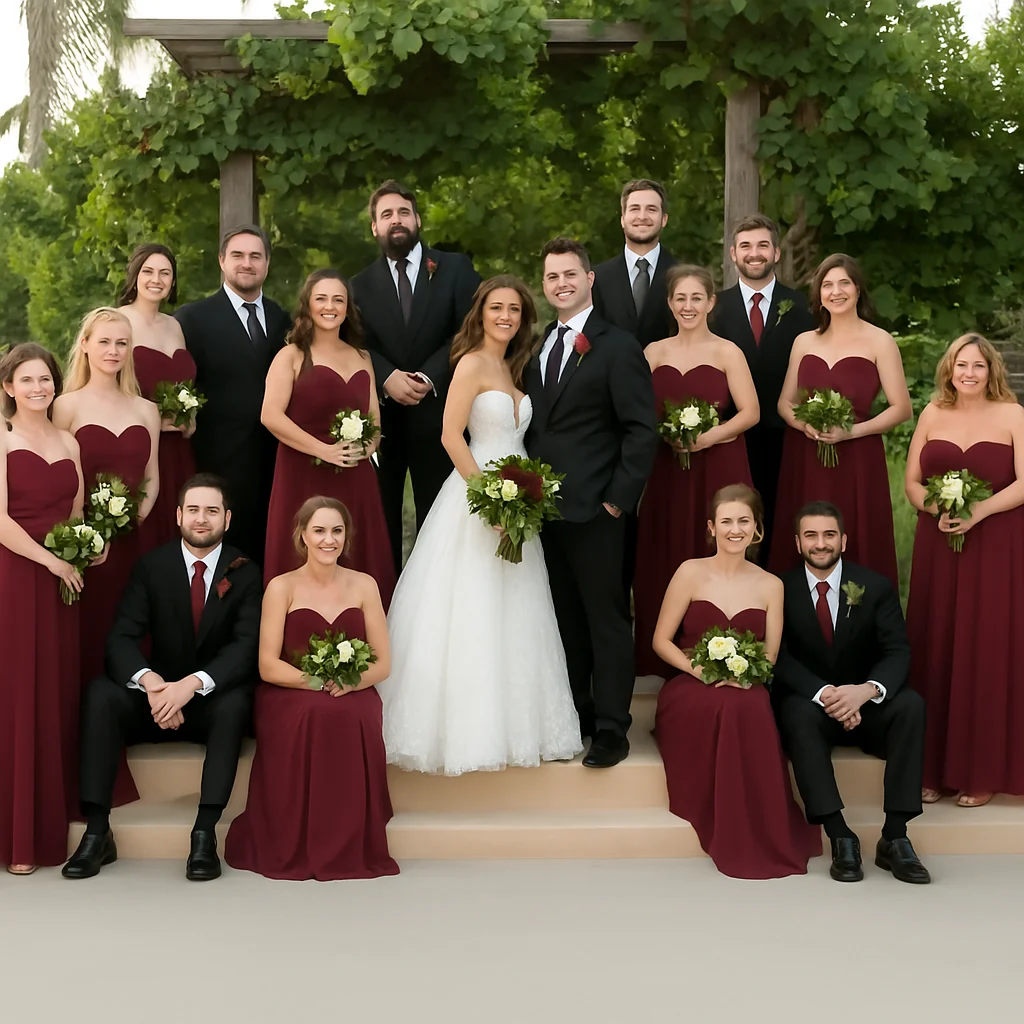A wedding veil is more than just a piece of fabric — it’s a romantic and symbolic accessory that adds magic, mystery, and elegance to a bride’s overall look. Whether you’re going for a timeless classic or a modern minimalist aesthetic, the right veil completes your bridal ensemble and enhances the moment you walk down the aisle.
In this comprehensive guide, we’ll cover the history, types, lengths, fabrics, and expert tips to help you choose the perfect wedding veil for your big day.
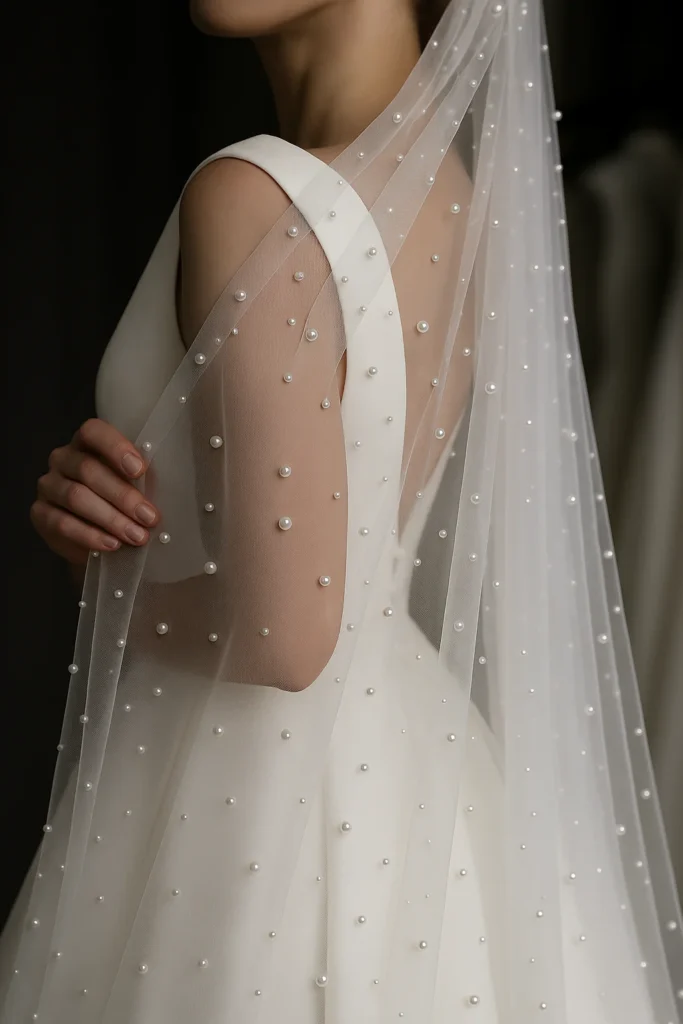
The History & Meaning Behind the Wedding Veil
Traditionally, wedding veils symbolized purity and modesty. In ancient Rome, brides wore veils to protect themselves from evil spirits. Over time, veils evolved into fashion statements that reflect the bride’s personal style and the tone of the ceremony — from grand cathedral veils to chic birdcage styles.
Today, veils are worn as a beautiful finishing touch that can be as dramatic or subtle as the bride desires.
Popular Wedding Veil Styles
Wedding veils come in a variety of lengths, layers, and finishes. Understanding the types will help you find one that complements your dress, venue, and overall bridal vision.
1. Cathedral Veil
- Length: 108–120 inches
- Best For: Formal, traditional weddings
- Style Tip: Ideal with long trains or ball gowns for a dramatic entrance.
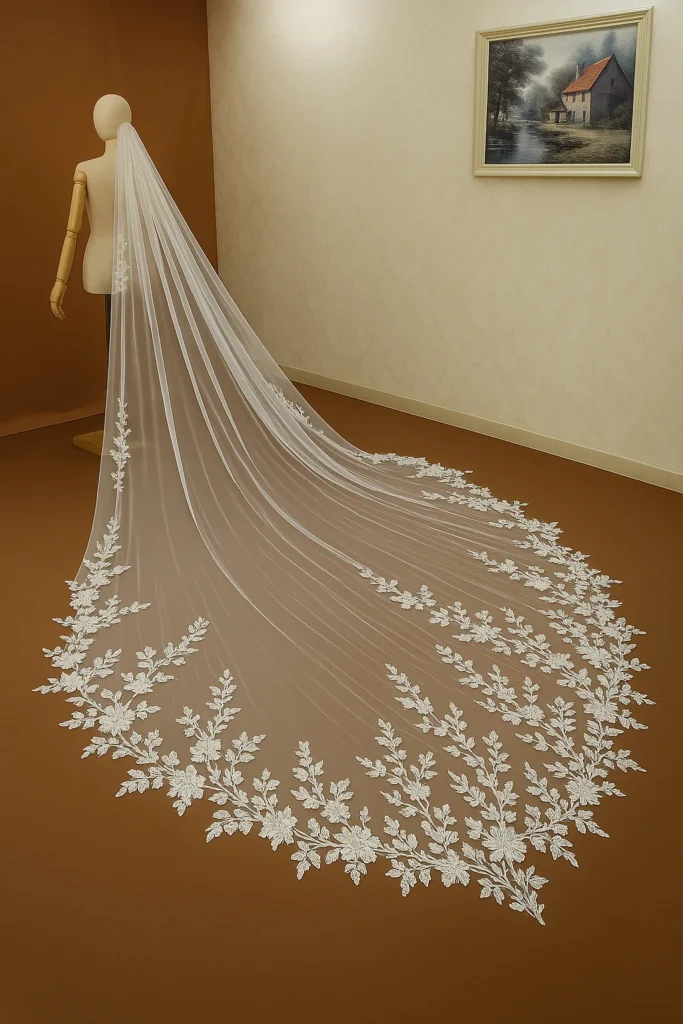
2. Chapel Veil
- Length: 90–108 inches
- Best For: Elegant and semi-formal weddings
- Style Tip: Adds grace without overwhelming your dress.
3. Fingertip Veil
- Length: Around 36–45 inches
- Best For: Most dress styles
- Style Tip: Universally flattering and easy to wear all day.
4. Elbow Veil
- Length: Approximately 25–30 inches
- Best For: Dresses with detailed bodices
- Style Tip: Adds romance while showing off your dress design.
5. Shoulder Veil
- Length: 18–22 inches
- Best For: Informal or vintage weddings
- Style Tip: Light and playful, perfect for outdoor or spring weddings.
6. Birdcage Veil
- Length: 4–9 inches
- Best For: Retro, minimalist, or civil ceremonies
- Style Tip: Often made from French netting, this style pairs beautifully with short dresses or jumpsuits.
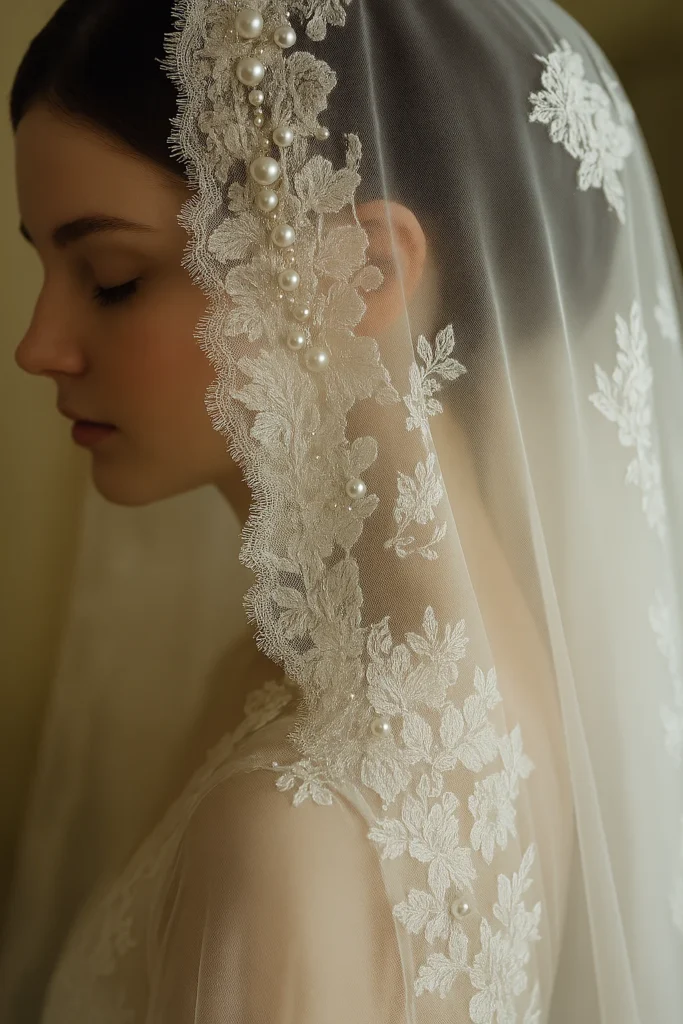
Veil Edges & Embellishments
It’s not just the length — the edge of your veil adds a unique character to your bridal look. Here are some popular finishings:
- Raw Cut: Simple, modern, and timeless
- Lace Edged: Adds vintage romance and softness
- Beaded or Crystal Trim: Glamorous and eye-catching
- Ribbon or Satin Trim: Offers structure and a polished look
- Embroidered Details: Personalized designs, initials, or floral motifs
Choosing the Right Veil for Your Dress
Your veil should complement — not compete with — your gown. Here’s how to pair them harmoniously:
- Ball Gowns: Look stunning with cathedral or chapel veils for a balanced grandeur.
- Sheath or Column Dresses: Pair beautifully with fingertip or waltz-length veils.
- Lace Dresses: Choose a plain veil or one with a matching lace trim.
- Detailed Backs: Go for a sheer, minimal veil to highlight back details or buttons.
- Short Dresses: Try a shoulder-length or birdcage veil for a vintage twist.
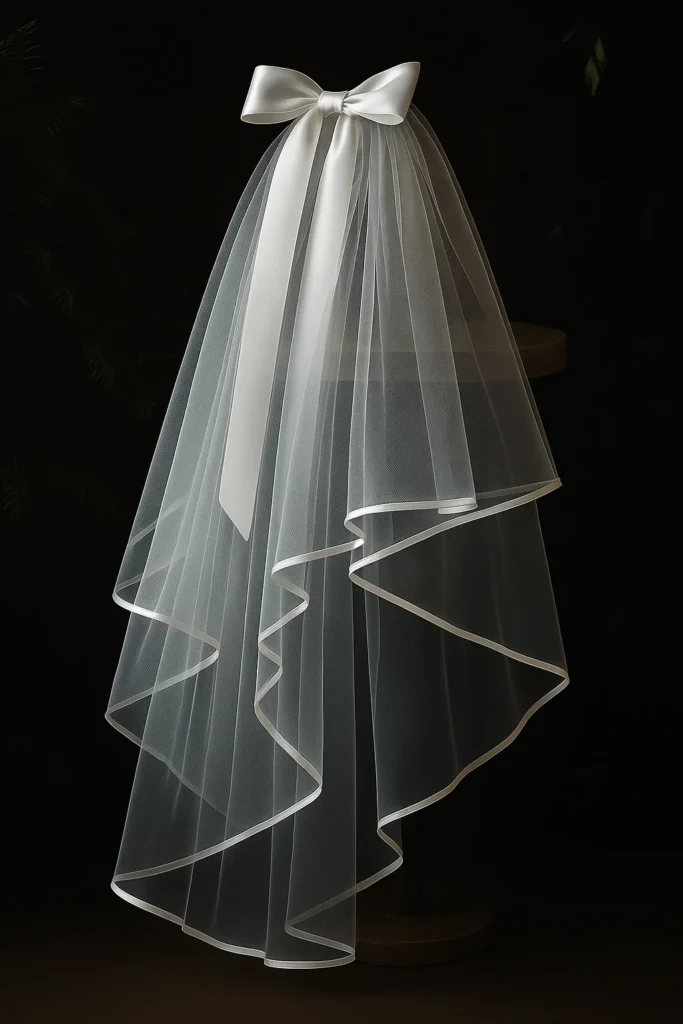
Wedding Veil Fabrics: What to Consider
The fabric influences how your veil falls and photographs. Common options include:
- Tulle: Lightweight, versatile, and the most popular choice.
- Silk Tulle: Softer and more fluid, but more delicate and expensive.
- Chiffon or Organza: Offers a flowy, romantic look with a bit more weight.
- Lace or Netting: Adds texture, perfect for vintage or themed weddings.
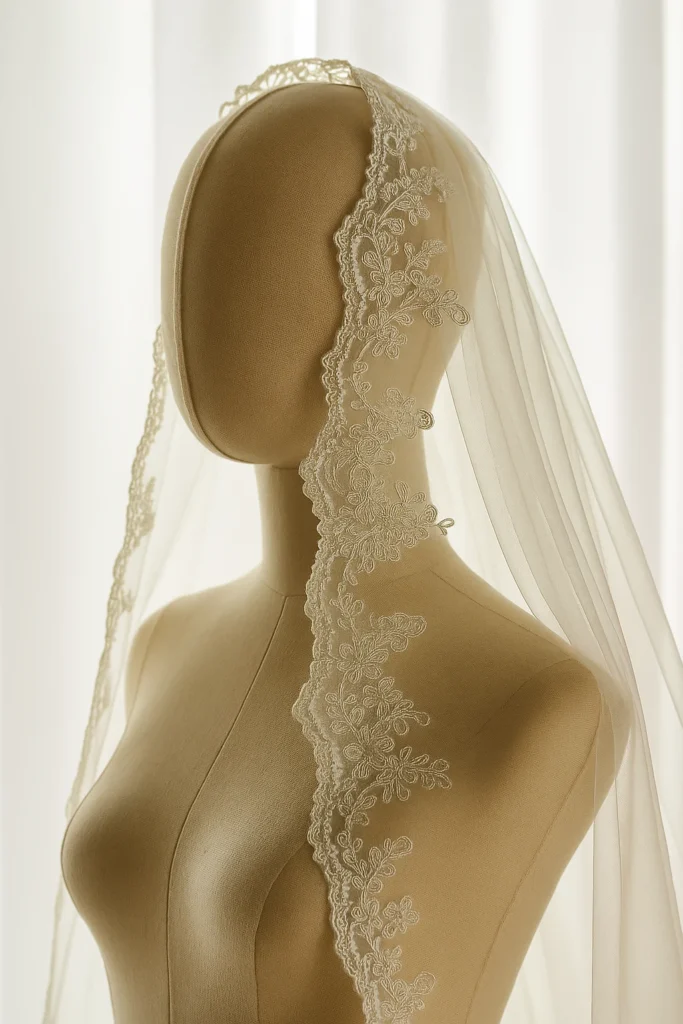
How to Wear & Style Your Veil
- Placement: High on the crown for a traditional look, or lower at the nape for a modern feel.
- Accessories: Pair with a tiara, floral comb, or jeweled pins to elevate your style.
- Hairstyles: Veils work beautifully with updos, loose waves, buns, or ponytails.
- Removability: Consider a detachable veil so you can remove it after the ceremony for easier movement and dancing.
Do You Have to Wear a Veil?
Absolutely not! Modern brides are choosing alternatives like floral crowns, headbands, pearl clips, and capes. The key is to feel confident and comfortable with your bridal look.
When Should You Buy Your Wedding Veil?
Buy your veil after choosing your wedding dress. Ideally, purchase it at least 2–3 months before the wedding, especially if it’s customized or made-to-order. This gives you time for fittings and adjustments.
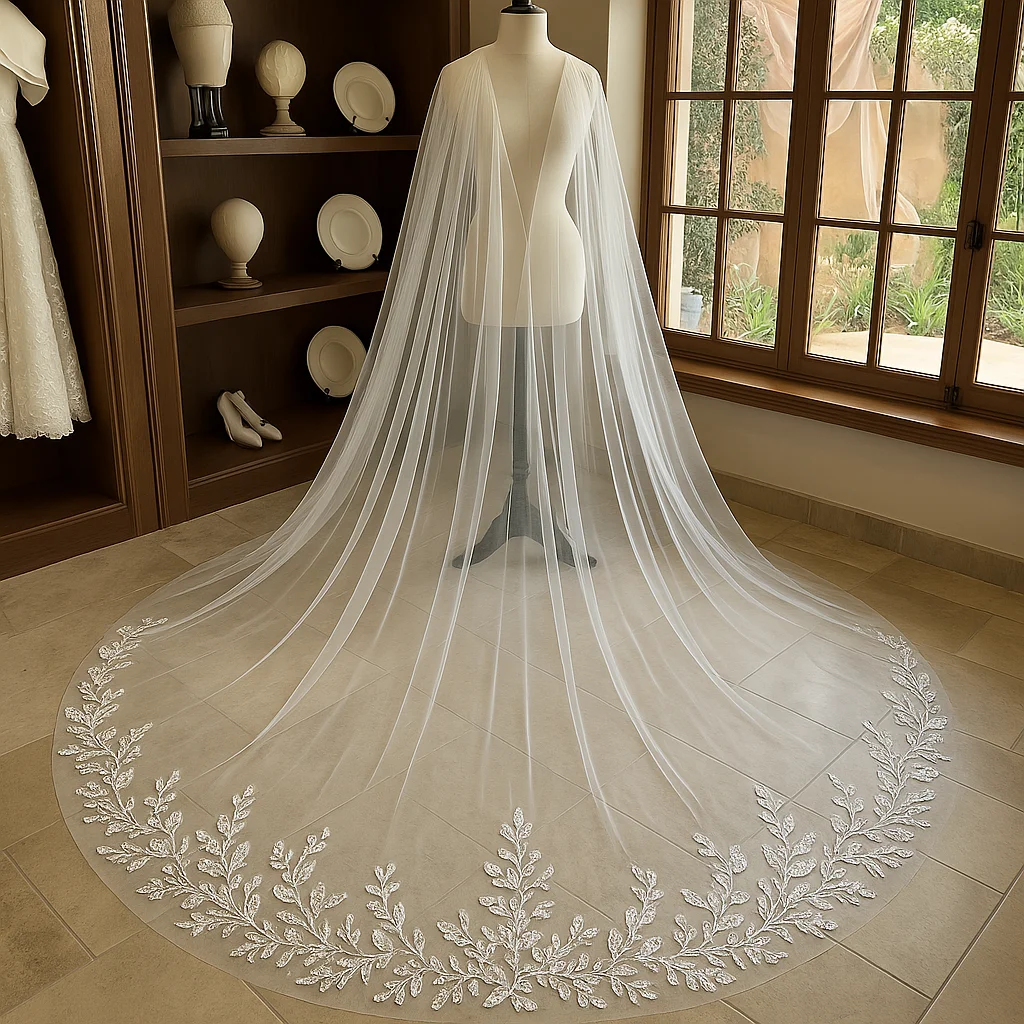
Top Wedding Veil Trends for 2025
- Veils with Personalized Embroidery (initials, quotes, wedding date)
- Color-Tinted Veils (blush, champagne, dusty blue)
- Pearl-Dotted Veils for a modern minimalist aesthetic
- Oversized Bows and Dramatic Layers
- Bridal Capes as veil alternatives
Final Thoughts: The Power of the Veil
A wedding veil adds emotion, elegance, and a sense of occasion to your bridal ensemble. Whether you’re keeping it traditional or giving it a fresh, fashion-forward twist, the right veil is a beautiful way to enhance your wedding-day glow.
Take your time trying on different styles, move around in them, and trust your instincts. When you find the right one, you’ll know — just like you did with your dress.
